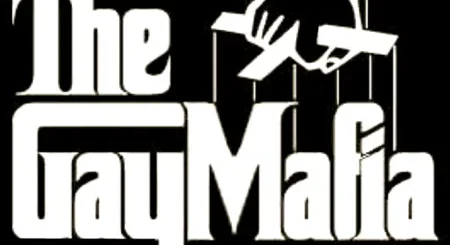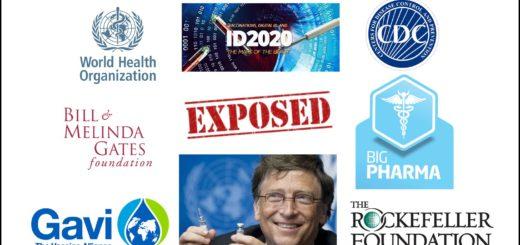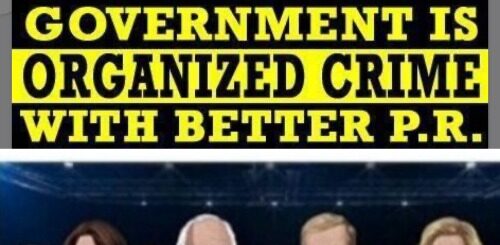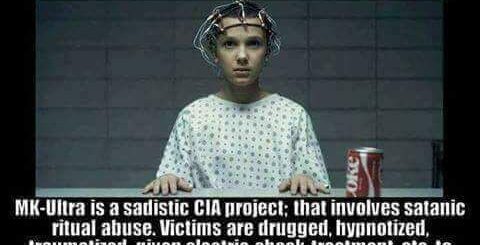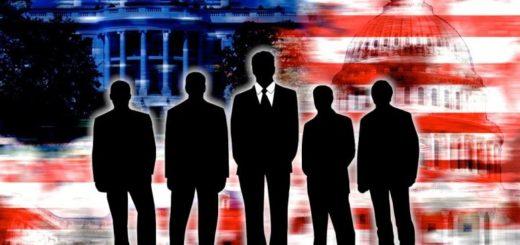Stimulus Checks Being Limited For You While Unchecked Money Printing For Wall Street
Taibbi: The COVID-19 Bailout Gave Wall Street a No-Lose …www.rollingstone.com › politics › politics-features › tai…May 13, 2020 — How the COVID-19 Bailout Gave Wall Street a No-Lose Casino … surrounded by a kind of Trumpian Money Wall that is designed to keep the … like mortgages and bonds with directed deployments of the Fed’s endless trillions.
The Government Makes $50 Billion a Year From Student Loans and You Really Think They Want to Give This Up?
Student Loan Horror: When You Think You Qualify For Debt Relief, Check Again. And Again
A pair of married science teachers were sure they qualified for student debt forgiveness. They discovered what many borrowers learned in the 2010s: not qualifying for aid is the norm
| Matt Taibbi | Feb 26 | 212 | 1,044 |

The romance of Robin and Kevin sounds like the stuff of old ballads. She was quiet and an introvert, he was the extrovert with an elaborate social life, and on the tree-covered campus of Columbia Community College near Sonora, California, they fell in love, while barely young enough to drive.
“Our first date was a walk with friends through the forest behind our dorms,” recalls Kevin. “Our album to sit and listen to was Van Morrison’s Moondance. Robin was my very own Brown Eyed Girl.”
“He knew my weird sense of humor that nobody else would ever get, especially from someone who’s quiet,” recalls Robin, who was seventeen when they met. “And I’d come up with something off the wall and think, ‘Okay that didn’t fly.’ But it would. And it was like, ‘Oh, you understand me.’”
The couple met in 1990, and married four years later. They were not rich people. Robin’s father, a contractor who’d had ups and downs financially, died when she was young. She was raised thereafter by a single mother who’d had to go back to school herself, and was wary of student debt thanks to her own experiences. “She was dead set against it,” Robin remembers.
They were at least debt-free in the early years, however, getting by with minimum-wage or seasonal jobs. Kevin worked as a ski instructor in the winter, and as a raft guide in the summer. They made a plan to get bachelors’ degrees together at Humboldt State University.
“We moved in together,” Robin remembers. “And surprise, I got pregnant.”
With a child on the way, they took out a series of federal loans, in part on the advice of Robin’s mother. “She said, ‘If you’re going to take out loans, make sure that it’s not a private loan, but a subsidized federal loan,’” Robin recalls. They did so and were soon on schedule to graduate and start the next stage after what Robin laughingly describes as their “hippies and Humboldt” years. They were happy, having merely switched one California vista for another.
“We spent those early years on walks in the forests of Northern California, in Columbia,” says Kevin. “Then it was through the redwoods of Redwood Park in the Arcata Community Forest with our newborn son, Gage.”

Life however has more twists and turns than straight lines, a fact that the current student loan system — premised upon timely graduation and immediate gainful employment — does not anticipate.
When the young couple was just a semester away from graduation at Humboldt, Kevin’s father, who ran a small auction house in Sacramento — “antiques, estates, and other stuff,” says Robin — fell ill with cancer. They moved, so Kevin could help maintain the family business while his father convalesced. He learned how to auction, but the couple still had hopes of finishing school.
They took classes at Sacramento State, finished credits for degrees from Humboldt, and then discovered what a lot of young people in the eighties and nineties were learning, that the implied bargain of college — get a degree, get a good job — was less than a concrete proposition. “It was a wake-up call,” Robin says. She remembers an early job selling muffins.
“The muffin route that I took over, was from a beautiful woman, who was very charismatic, bubbly, and stunning,” she recalls, laughing. “She knew her route, and gave me the list, saying, ‘Do these muffins.’ I shadowed her the first day, and she sold them all! ‘Okay,’ I thought. ‘I’ll do the same thing.’ I quickly found that part of the customer attraction was seeing her. I came back with half the muffins.”
After borrowing a collective $31,000 to get Bachelor’s degrees at Humboldt, the couple realized they needed an additional qualification to have real security. “I remember looking at a headline in a newspaper that said, ‘California teacher shortage,’” Robin remembers. They ended up going to Cal-State Chico to get teaching certificates, moving in with Robin’s mother, who had a (very) small house.
“We actually put a tent up in her backyard,” she recalls. “We realized that we’d really hit bottom. I remember, in September of 2001, my mother came outside one morning and said, ‘A plane just crashed into the twin towers.’ I remember that clearly because I was sitting in a tent.”
At Chico State, they learned about new programs, designed to help alleviate student debt through public service. They went through some of the options: Americorps, a program called “Public Service Loan Forgiveness” for taking public-sector jobs, and a program called “Teacher Loan Forgiveness” that canceled up to $17,500 in debt for teachers who taught special needs, math, or science in low-income school districts.
The catch was, you had to work five years at a low-income “Title 1” school in order to qualify for the debt cancelation program. Kevin and Robin were both science teachers. They seemed like natural fits. Then, they made a mistake.
After graduation, they were offered jobs in, among other places, Oakland, Los Angeles, and… Maui. All three schools were in low-income districts. Although Hawaii is Hawaii, its public school system has many of the same problems as other states: the state just this past year qualified for $56 million in federal Title 1 support. They researched the locations and concluded, erroneously, that the Hawaii school they were looking at was a Title 1 school. “And we thought, ‘That’ll work,’” Robin recalls, and moved to the islands.
They worked for five years before finding out their error. When they went to apply for Teacher Loan Forgiveness, they were told they were at one of the only schools in the district that did not qualify for Title 1, a designation that among other things pertains to schools where “at least 75% of students qualify for free or reduced-price meals.”
Essentially, Robin and Kevin misunderstood the intricacies of Title 1 designation for the district. A school administrator explained that an insufficient number of their high school’s students took advantage of the free lunch program.
So far, this sounds like a story that won’t arouse much sympathy: a couple chooses to live in Hawaii instead of Oakland, doesn’t get firm reassurance ahead of time that they qualify for a program, then works ten collective years before hearing the punchline that their debts won’t be forgiven. The joke’s on them, correct?
Not quite. The actual punchline was that even if Kevin and Robin had chosen correctly, and gone to a bona fide Title 1 school, they likely still wouldn’t have received the benefits.
“During our time at Maui High, No Child Left Behind came into effect,” Robin says.
Another requirement for Title 1 benefits is that applicants be “highly qualified.” The Bush-era law changed the definition of “highly qualified” in such a way that, Robin and Kevin were told, their California teaching credentials would not have qualified them for the designation.
Stories like Kevin’s and Robin’s are not unusual. After programs like Teacher Loan Forgiveness and especially Public Service Loan Forgiveness were instituted in the late Bush years, complaints began to trickle in that people who believed they qualified for debt forgiveness were being disqualified by idiosyncratic fine-print exceptions at extraordinary rates.
Was it a coincidence that these complaints began snowballing just as the Department of Education federalized student lending in 2010? Within just a few years after the change, the Department of Education was making $50 billion a year in profit from student loans. Today, the DOE has a portfolio of well over a trillion dollars in loans, and would be roughly the fifth-largest bank in the United States, if it were a bank.
The DOE has always had a powerful incentive to be selective in awarding relief, particularly with the popular Public Service Loan Forgiveness (PSLF) program, which had been instituted in 2007 and required ten years of service. When that first ten years passed, how many people would get to take advantage of the programs?
Not many, as it turned out. In July of 2019, the American Federation of Teachers filed a lawsuit against Betsy Devos and the Department of Education, alleging among other things that of the roughly one million people who filled out paperwork to take advantage of the Public Service Forgiveness Program since its inception in the late 2000s, the overwhelming majority were disqualified. The suit, citing the Department of Education’s own statistics, explained:
According to the latest available data, as of March 2019, 73,554 unique borrowers had submitted 86,006 applications for PSLF, and only 864 applications had been approved for forgiveness. Only 518 borrowers—fewer than 1% of unique borrowers submitting applications—have had their loans forgiven.
A 99% claims rejection rate — later statistics would put the number closer to 98% — would make even health insurance companies drool. The lawsuit cited absurd disqualifications. One plaintiff made a required 120 payments, but was consistently told she was short the full amount, apparently because she made some payments in a forbearance period. In another case, the Education Department credited an applicant with one year of employment instead of ten, then recorded 66 payments instead of 120, then rejected a claim because a form from a servicer lacked an Employee Identification Number — and so on.
To this day, the National Student Legal Defense Network that helped bring that lawsuit is fighting a pitched battle just to secure simple reforms like a right to a written explanation for denials. Student loan holders currently can’t expect even this baseline minimum, as NSLDN’s president, Aaron Ament, explains.
“It’s like calling a call center at Verizon,” he says. “Very hard to get an answer.”
In another bizarre case from 2019, American Bar Association v. Department of Education, student borrowers described being told repeatedly during their initial ten-year period of public-sector employment that they qualified for relief under the PSLF, only to be told later on that, sorry, you don’t qualify.
In one instance, a lawyer who worked for the Vietnam Veterans of America was repeatedly told in writing that he qualified for PSLF funds, but after making more than 30 payments, he received a letter from his servicer saying that after “further research and after consulting with the Department,” the servicer had “reversed [his] previously approved employment period,” because they now believed VVA “does not provide a qualifying service.”
The pattern, of the Department of Education promising various relief programs only to bounce people thanks to technicalities or outright obstinacy, has continued through the pandemic. Last March, the Department of Education announced that as part of its Covid-19 relief efforts, they’d begun implementing the following programs: “suspension of loan payments, stopped collections on defaulted loans, and a 0% interest rate.”
The “pause” was full of loopholes. In a surprising number of cases, wages continued to be garnished in defiance of government promises, prompting another suit. Others who felt sure they qualified for relief discovered that they did not, thanks to an array of technicalities. An estimated six million holders of Federal Family Education Loans (FFELs) serviced by private carriers “will not receive any help with their student loans at all, despite having used a federal borrowing program,” as one student advocate put it.
The FFELs in question were mostly issued before 2010, and included Subsidized Federal Stafford Loans, Unsubsidized Federal Stafford Loans, FFEL PLUS Loans, and Consolidated Loans. As holders of exactly these sorts of loans from the before-time of pre-2010, Robin and Kevin didn’t qualify.
“The COVID pause on payments and interest wasn’t happening on our loans,” Robin explains. “Because we had Federal Loans, we wondered, ‘Why is this not occurring? And when we looked at it, we realized, ‘Oh, no, we’ve got the wrong code on our loans.”
What started out as a $31,000 commitment for a Bachelor’s degree ballooned over the years, thanks in large part to interest and the high cost of living, especially with (now) two children. The couple insists they have never missed a payment, though they have occasionally taken advantage of forbearance programs. As of today, their debt sits at $126,000.
Comment: IMO all by design seeing the Bushes hand in this scam. They are a totally EVIL family.
Borrowers often spend their youth fighting to get clear of the whole debt. As they move closer to middle age, and the balance either stays static or moves in the wrong direction, strategies change. Instead of trying to pay as much as possible over the long haul, they try to pay as little as possible each month. Programs like Income-Based Repayment incentivize people in particularly hopeless situations to work less rather than more.
The interest payments become so ingrained that “growing old together” becomes a promise that couples make not only to each other, but to the implied new third member of their “Til Death Do Us Part” compact, their non-dischargeable loans. For this reason, many borrowers can pinpoint the exact moment when they first gave up hope of repayment.
“It was kind of a psychological thing when it tipped over from $99,000 to $100,000,” Robin says. “It became, ‘We’re never going to pay this off.’” They gave up hope, and maybe that’s the point.

| Brady M GhostFeb 26I’m just gonna leave this here:Matt and the majority here want our govt to fully control healthcare. 15Reply |
218 replies by Matt Taibbi and others
| BlissexFeb 26«as of March 2019, 73,554 unique borrowers had submitted 86,006 applications for PSLF, and only 864 applications had been approved for forgiveness. Only 518 borrowers—fewer than 1% of unique borrowers submitting applications—have had their loans forgiven.»So it is essentially a scam to keep lower the federal and local taxes on affluent people, as such low approval rates can only be the result of carefully designed rules.The key element of the scam is that the application for the PSLF can only done at the end of the qualifying period, not at the beginning; if it were done at the beginning, most people who don’t get approved would not do the required public service that the PSLF is meant to help fund.I would suspect that the equivalent “GI Bill” for veterans has much, much higher approval rates, and that they are usually approved upfront. Teachers are usually on the left, veterans on the right. 17Reply |
50 replies by Matt Taibbi and others1042 more comments…TopNewCommunityWhat is TK News by Matt Taibbi?The American Press Is Destroying ItselfA flurry of newsroom revolts has transformed the American pressMatt Taibbi
On “White Fragility”A few thoughts on America’s smash-hit #1 guide to egghead racialismMatt Taibbi
It’s official: Russiagate is this generation’s WMDThe Iraq war faceplant damaged the reputation of the press. Russiagate just destroyed itMatt Taibbi





